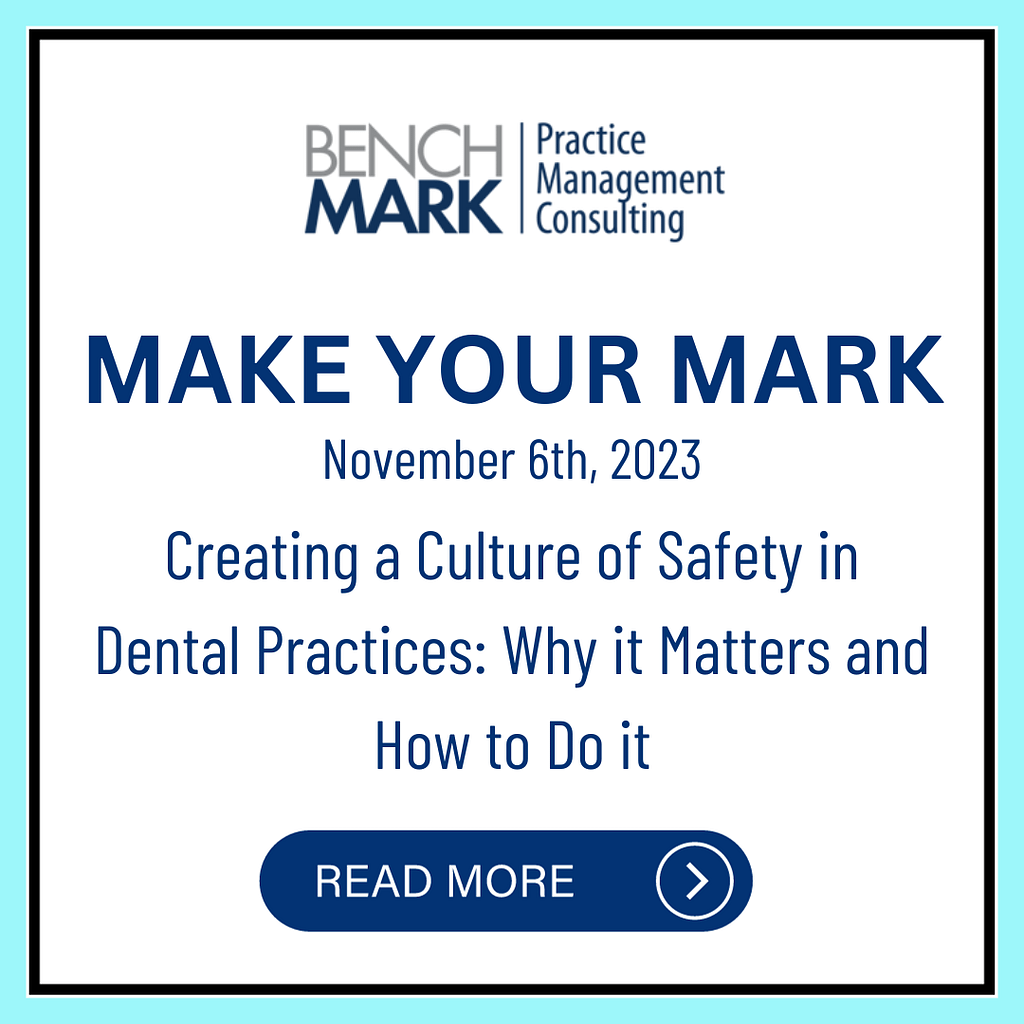In any healthcare setting, safety is a critical component that cannot be overlooked. For dental practices, creating a culture of safety has profound implications that extend far beyond mere compliance with regulations. It’s about building a practice where safety is ingrained in every action, decision, and policy.
This cultivates an environment that not only prioritizes the well-being of patients but also that of the dental team. Below we delve into the multifaceted benefits of fostering a safety culture and provide insights into how you can successfully implement it in your practice.
Promoting Team Well-Being
As has been discussed before, when staff feel that their well-being is a priority, the ripple effect is significant. A culture of safety does more than just prevent accidents; it fosters an environment of respect and care that motivates staff to give their best.
Employees who are confident about their safety at the workplace become ambassadors of the practice, projecting the same level of care and attention to the patients they serve. The simplest two ways to promote that well being are:
1. Proper Training:
Training is the cornerstone of safety. Team should be trained not only in the protocols but also in the philosophy of safety. Ongoing training sessions can ensure that safety measures evolve with the changing industry standards and technologies.
2. Well-Maintained Equipment:
The importance of having the correct and well-maintained safety equipment cannot be overstated. Regular inspections and audits can catch any issues before they become safety hazards.
3. Following Ministry Guidelines:
Ministry guidelines are put in place for the safety of the team and the patients. Some guidelines may seem exaggerated or “over the top” but there is usually a reason for them. We know that every guideline won’t be followed 100% to the letter but deciphering how to follow them should be agreed upon by all team members and the owner.
Building Patient Trust
Beyond your team, your patients are your most significant asset, and their trust is the currency that can make or break your practice. In the context of a dental practice, trust extends far beyond clinical competence; it’s also about ensuring a clean and safe environment.
To cultivate patient trust, consider these two points…
1. Visible Safety Measures:
Small, visible gestures can have a big impact. From sterilizing instruments in view of patients to prominently displaying safety certifications, these actions affirm your commitment to safety.
2. Patient Education:
Educating patients about the safety measures you have implemented empowers them to be active participants in their own care, enhancing their overall experience.
As dental practitioners we have all struggled through knowing that our patients don’t always follow through on our diagnosis for their oral care. Truth be told that the safer patients feel inside your practice, the greater chance that follow through will occur with diagnosed treatment.
Risk Management
Risk management isn’t about eliminating risks but managing them effectively. In a safety culture, risks are continually identified, assessed, and mitigated through collective efforts, thereby reducing the likelihood of adverse events.
Risk management has almost become synonymous with HR… meaning that there is an almost immediate ‘freeze factor’ that happens. For decades when the Human Resource person or the risk manager comes in there is a heightened sense of awareness, often based from fear.
The better practices become at mitigating the fear, the better they get as risk management. Here are two ways to create a less fear based approach.
1. Regular Safety Audits:
Periodic audits can provide valuable data on the effectiveness of your safety protocols, enabling you to make data-driven decisions.
2. Feedback Mechanisms:
An open culture that encourages team members and patients to report unsafe conditions or practices is crucial. It’s an invaluable feedback loop that can offer insights into areas for improvement.
More importantly, make the subject of risk management a commonplace theme of discussion. This encourages normal day-to-day operations that include subconscious thinking around mitigating risks.
Creating a culture of safety in your dental practice is not a one-time initiative but a continuous process. It’s an investment in the well-being of your team and patients and, by extension, the long-term success of your practice. The steps mentioned above are not exhaustive but serve as a robust starting point for any practice committed to establishing a culture of safety.




